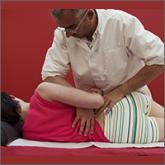There is evidence for the effectiveness of other types of physical techniques for low back pain, too. A recent meta-analysis of spinal manipulation for acute low back pain concluded that it is moderately effective in reducing pain and increasing function.2 And although the evidence is not considered strong, the American College of Physicians included massage, tai chi, yoga, acupuncture, motor control exercises, and progressive relaxation in their recent recommendations for the treatment of acute, subacute, and chronic low back pain.3
My personal favorite treatment for chronic low back pain is walking. In a clever randomized trial, Irish researchers randomized patients with chronic low back pain to 3 groups: standard physical therapy, weekly exercise classes designed for people with low back pain, and a tailored, gradually increasing walking program.4 Participants in the last group were instructed to walk at least 4 days a week, starting with 10 minutes/day and working up to 30 minutes of brisk walking 5 days/week. The improvement in pain and disability after 2 months, although modest, was as good in the walking group as in the other 2 treatment groups.
So let’s try relying more on physical activity to help our patients manage their aches and pains. It may produce benefits for other health problems, too, and start many patients down a road to healthier living.
